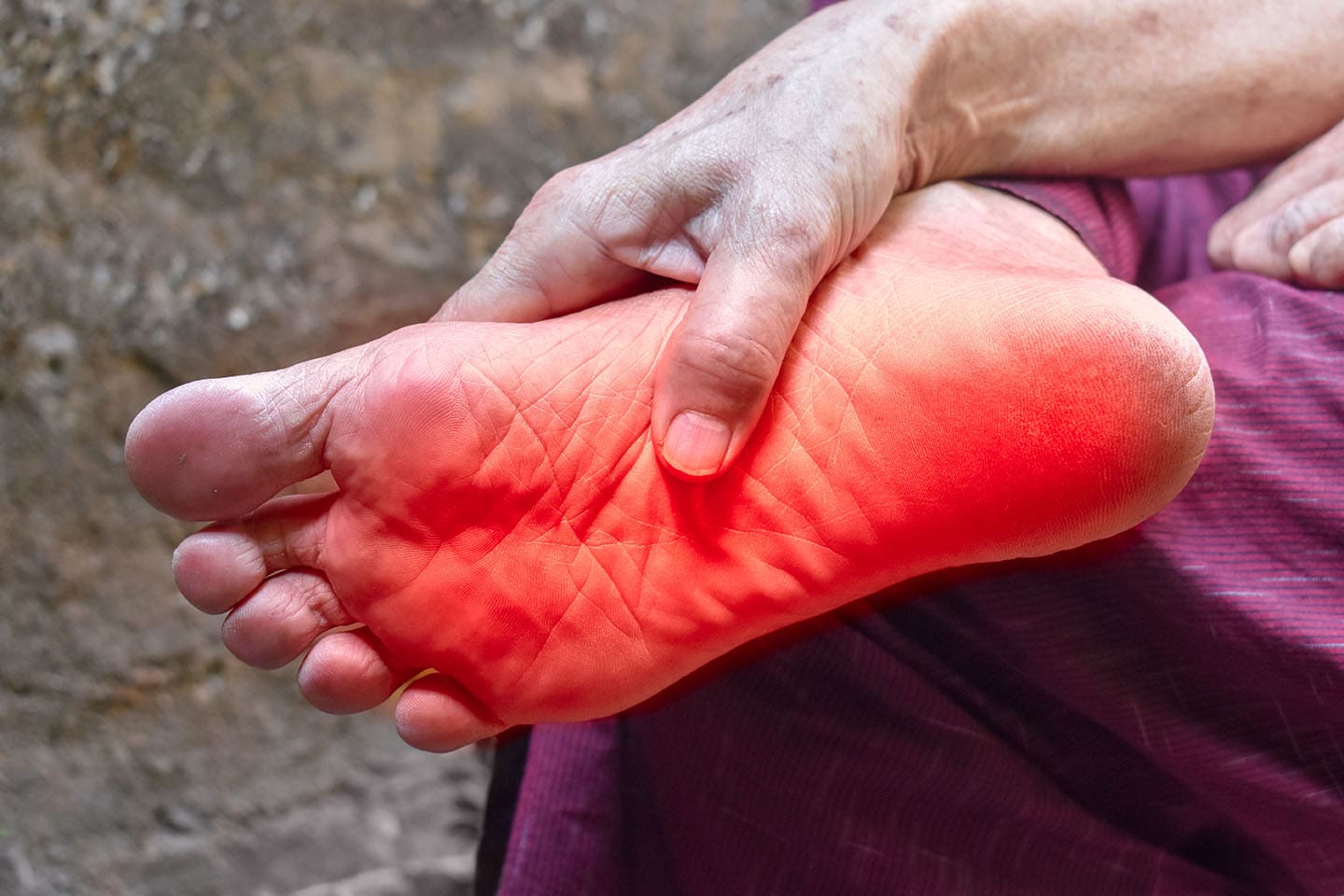Why ENFD Analysis Provides the Best Tool to Confirm Small Fiber Peripheral Neuropathy
One quick in-office procedure can provide a definitive diagnosis, allowing for effective treatment and symptom relief

Have patients complained of burning pain, tingling, numbness, or a pins and needles feeling of the lower extremity?
This in-office procedure is a minimally invasive, 3mm punch biopsy of the distal leg (10cm proximal to the lateral malleolus). It typically takes about five minutes, with little to no post-procedure care. The ENFD test is reimbursable by most insurance companies.
During ENFD analysis, a specially trained pathologist calculates the density per unit area and quantifies the tiny myelinated A-delta and unmyelinated C fibers within the epidermis. This highly specific and sensitive testing method allows clinicians to definitively diagnose suspected SFPN.
Neuropathy is complex
While peripheral neuropathy affects about 20 million adults in the U.S.2, it is often misdiagnosed with large fiber neuropathy due to its complex array of symptoms, both somatic and autonomic. Patients with SFPN will often have normal reflexes, muscle strength and electromyography (EMG) and nerve conduction velocity (NCV) test results.
SFPN usually affects the hands and/or feet in a stocking or glove-like pattern.3 A patient may present with symptoms that range from burning and tingling, to coolness and numbness. This form of neuropathy often occurs secondary to diseases such as diabetes mellitus or it may be an indication of other autoimmune disorders.
Other patient presentations may include:
- Restless leg syndrome
- Abnormalities in sweating (hyperhidrosis)
- Inability to sweat normally (anhidrosis)
But because these presentations are not always SFPN, identifying the precise form of neuropathy allows for the most effective treatment method.
ENFD test benefits
ENFD is a powerful tool that provides the most objective method of documenting and monitoring the progression of SFPN. Early ENFD testing may also reveal degenerative changes, so that patients are placed on preventative therapies prior to the onset of symptoms.
Once the diagnosis of SFPN is confirmed, there are several medical treatments that may provide relief, depending on the type of nerve damage. Therapy to treat the symptoms and underlying causes of the neuropathy could include diet/lifestyle modifications, supplements, or topical medications. However, because SFPN has many causes, no product works for everyone.
Studies show that dietary supplements, such as NeuRx-TF, containing Alpha-Lipoic Acid4 (600mg daily) and Benfotiamine5 (600mg daily) may be helpful in some cases to diminish symptoms of neuropathy and improve epidermal nerve health. Investigators also have noted a benefit to using combination therapy that includes L-methylfolate, methylcobalamin and pyridoxal 5’-phosphate6.
ENFD retesting at future intervals, between six-to-12 months, may also help to assess the disease progression or regression and the therapy effectiveness over time. An accurate and definitive diagnosis of SFPN provides improved patient care and allows for appropriate neuropathy management.
“My patients have seen a drastic improvement in their quality of life through providing ENFD analysis and subsequent treatment,” said Lilly Khavari, DPM, a Texas-based physician-owner. “Your patients will love you for offering this test.”
For more information on how to perform an ENFD procedure, request your complimentary ENFD test kits and an in-service, visit bakodx.com/enfd.
DID YOU KNOW?
Conditions associated with Small Fiber Peripheral Neuropathy
- Metabolic (diabetes mellitus, metabolic syndrome, hyperlipidemia)
- Inherited (Fabry’s disease, Tangier’s disease, familial amyloid polyneuropathy)
- Toxic (chemotherapy, alcoholism, solvent exposure)
- Autoimmune (Sjögren’s syndrome, vasculitis/polyarteritis nodosa)
- Amyloidosis (non-inherited forms of amyloidosis, e.g. lymphoma or plasma cell dyscrasias)
- Infectious (HIV, hepatitis C, Lyme disease)
- Idiopathic (For a relatively large percentage of cases, there is no identifiable cause of SFPN)


